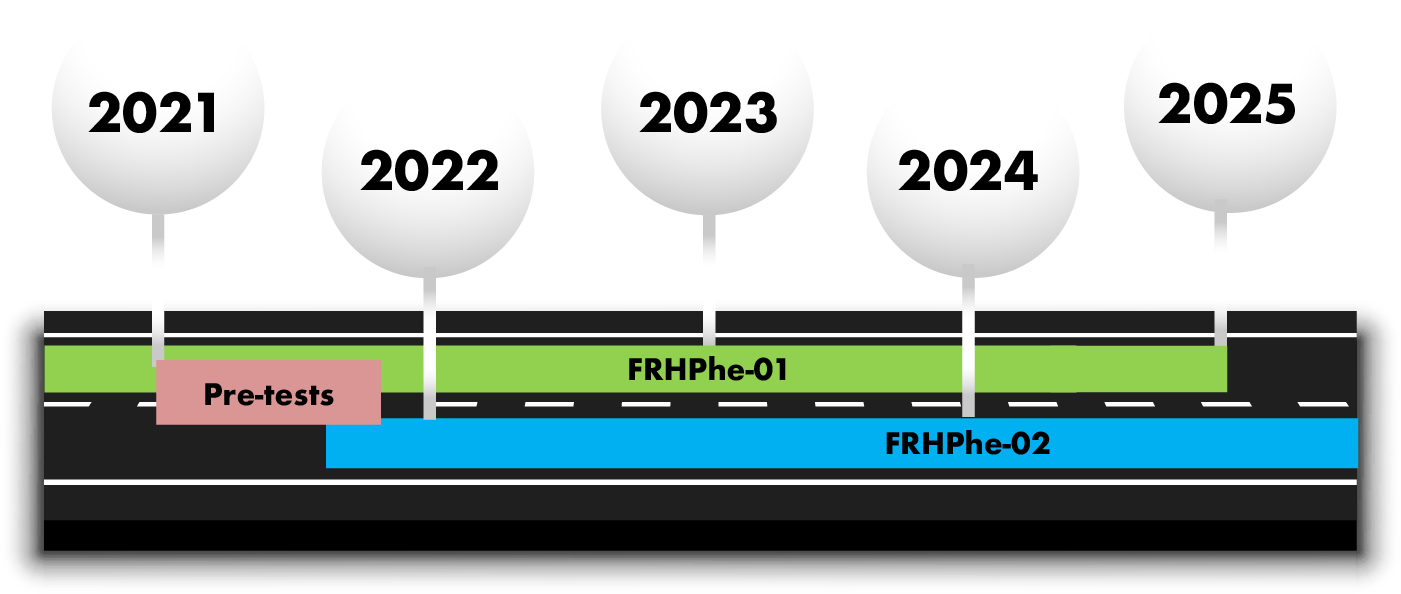Twelve months has now passed since the FIM invited all the stakeholders to launch the next phase of development of the protective helmet standard FRHPhe-02. No one could have anticipated a situation like the crisis we are facing right now, but thankfully the impact on the progress of this project is only minor and all remains on schedule.
For the first phase the helmet had to be homologated by size even if some parts were common to the different sizes. However, it became apparent during the homologation tests that some sizes were sharing the same shell and liner, and only the comfort padding was different.
After in depth analysis of the data, it was concluded that the influence of the comfort padding thickness for adjacent sizes that share the same shell and protective padding appears to be negligible. Therefore, to reduce the costs of the homologation tests, the FIM decided to homologate the helmet by the combinations of shell and liner instead of by size.

Some concerns were raised about comparison of the low speed impact and the oblique tests, because the normal velocity of these two tests are close (5.0 [m/s] for linear low speed and 5.657 [m/s] for the oblique test). According to the analysed data from the homologation tests, the low-speed test method might be omitted in the new version of the standard and replaced by the oblique test in order to assess injury risk in low severity impact events.
For the current oblique test, the impact sites are distributed evenly around the central vertical axis of the headform. However, only rotation around the X-axis (270°), Y-axis (0°, 180°) and combinations of them (45°, 135°) are evaluated. According to the directional dependence of the Brain Injury Criterion (BrIC) definition, the lowest critical angular velocity is around the Z-axis.
Therefore, the Z-axis is the most sensitive head rotation axis to generate brain injuries. New orientations need to be defined to assess the behaviour of the helmet in the three axes. Some of the current orientations will disappear and new ones will be introduced to assess the behaviour in the Z-axis.
Unfortunately, the basilar skull fracture is not specifically assessed neither by ECE 22.05 nor by FRHPhe-01. Therefore, a new Method for the Chin Guard Evaluation needs to be defined. The conventional linear impact on the S point will disappear for another more suitable test to evaluate the Basilar Skull Fracture.
During the homologation test from the first phase, it has been noted by the operator that the headform is sometimes difficult to be removed from the crashed helmet. A qualitative assessment of the cheek pad removal is now under evaluation, to reduce the risk of harming a fallen rider when the helmet is removed.
The data analysis of the tests for FRHPhe-01 homologation has shown that the current metrics (BrIC, PRA, HIC and PLA) show low to medium correlation with the kinetic energy breakdown in the impacts. These findings are still preliminary, but they show that the introduction of some energy considerations in the standard may help identifying helmets less protective than others.
With the modifications planned, it is to be expected to reduce the number of samples to be sent for Homologation from ten to 5, which will be more financially viable for the helmet manufacturers.
After some very interesting discussions with different manufacturers, it has been concluded that the timing has to be decided in the most efficient way to allow the research and development department to design new models to be compatible with the new FRHPhe-02. It is expected to make some validation pre-tests, starting from mid-2021. The official publication of FRHPhe-02 is expected by the end of 2021 and the mandatory use of the new helmet regulation will be in 2025.

FRHPHE-02 FOR OFF-ROAD HELMETS
A deep literature review on crashes on circuits and in Off-Road has been made and, given the wide variety of competition environments (natural terrain, inside stadiums, snow, etc…) and competition differences among the off-road motorcycle racing events, all these variants makes it unreasonable to define a specific off-road helmet testing procedure.
CURRENT FRHPHE-01 NORM AND HELMETS APPROVED WITH THE NEW REGULATION ECE 22.06
As you may already know, the new European regulation for protective helmets is starting next year and some new helmets can be submitted for FIM Homologation. As the linear tests in ECE 22.06 are identical to FRHPhe-01, these tests will not be reprocessed during Homologation tests. Only oblique and penetration tests will be required.

